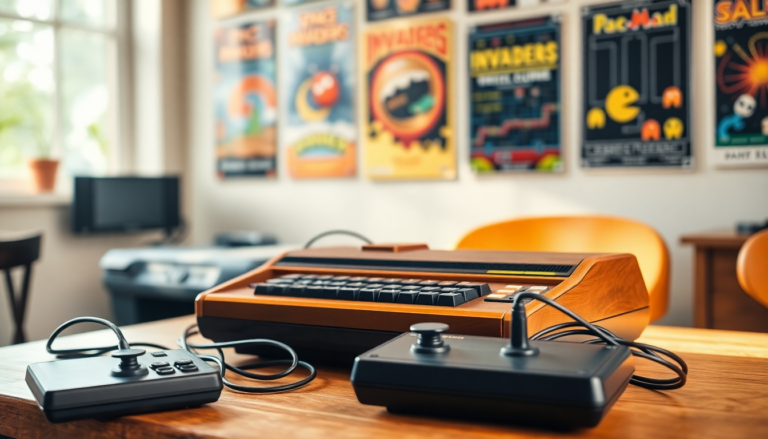Argomenti trattati
The Atari 2600, which first hit the market as the Atari Video Computer System (VCS) back in September 1977, is often hailed as a revolutionary home video game console. Developed by Atari, Inc., this groundbreaking system was one of the first to feature microprocessor-based architecture and interchangeable ROM cartridges, setting a new benchmark in the gaming world.
The Birth of a Gaming Revolution
Atari’s journey to the 2600 was sparked by a bold vision from CEO Nolan Bushnell, who dreamed of creating a programmable home gaming system. The game changed in 1975 with the introduction of affordable microprocessors by MOS Technology, making Bushnell’s dream a reality. Under the working name “Stella,” Atari’s Cyan Engineering division developed a prototype, but financial hurdles led to Atari being acquired by Warner Communications in 1976.
When the Atari VCS launched, it came packed with an impressive lineup of games, including the classic Combat. The system quickly gained popularity as Atari began porting many of its hit arcade titles, significantly boosting the console’s appeal. Then in 1980, the release of Space Invaders marked a pivotal moment, cementing the 2600’s status as a gaming powerhouse. By the early 1980s, the console had become synonymous with home gaming, achieving soaring sales figures.
The Golden Age and Subsequent Decline
Fast forward to 1982, and the Atari 2600 was ruling the North American market with around 10 million units sold. However, the company faced a series of setbacks due to questionable managerial decisions and the rushed release of two highly anticipated titles: Pac-Man and E.T. the Extra-Terrestrial. While Pac-Man initially became a bestseller, its poor adaptation from the arcade version left many players disappointed. E.T., developed in a mere six weeks, was met with harsh criticism and failed to live up to sales expectations.
This mismanagement, coupled with a flood of subpar third-party titles, contributed to the infamous video game crash of 1983, leading to Atari’s rapid decline. In 1984, Warner Communications sold Atari’s consumer electronics division to Jack Tramiel, marking a significant turning point for the company.
The Legacy of the Atari 2600
Despite the challenges it faced, the impact of the Atari 2600 on the gaming landscape is undeniable. It was a pioneer in home gaming, inspiring countless developers and laying the groundwork for future consoles. To honor its legacy, the Atari 2600 was inducted into the National Toy Hall of Fame in 2007 and continues to be celebrated by retro gaming enthusiasts.
Even after its discontinuation in 1992, the Atari 2600 maintained a devoted fan base. Various retro-style consoles and even LEGO models have been released, keeping the essence of this classic alive. As we reflect on the Atari 2600, it stands as a powerful symbol of innovation and the transformative nature of video games. Isn’t it fascinating how a simple console can shape an entire industry?

